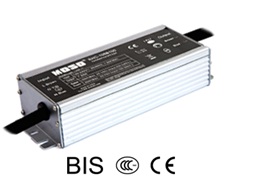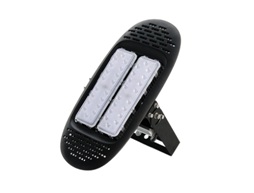Global telecommunications companies are actively rushing to deploy wireless area network (Wi-Fi) and time-sharing long-range evolution (TD-LTE) base stations. Global telecom operators China Mobile, KT, SKT, NTT DoCoMo and AT & T have all planned to build Wi-Fi and Long-Term Evolution (LTE) Small Cells simultaneously. Among them, China Mobile, KT and SKT plan to develop Wi-Fi And TD-LTE micro base stations are expected to drive business opportunities in related supply chains. Chen Meiling, an industry analyst in the Communication Research Department of the ITIS Program Electronics and Systems Research Group of the Industry and Economic Center of the Industrial Technology Research Institute, said that compared with large base stations, micro base stations not only transmit higher amounts of data, but also have lower costs in backbone, address and connection. Therefore, the Wireless Broad Alliance and the Small Cell Forum are currently collaborating to promote the popularization of HetNet micro base stations, so as to optimize and distribute the network, which can help telecom operators reduce capital expenditures (CAPEX) and Operating expenses (OPEX). It is understood that at this stage 98% of telecommunications companies have already begun plans to deploy micro base stations, of which AT & T plans to build 40,000 micro base stations by 2015. Informa, a municipal research institute, pointed out that the current global shipments of micro base stations have surpassed those of large base stations, and it is expected that the global shipments of micro base stations will reach 60 million units in 2015. Chen Meiling believes that China Mobile, KT and SKT currently have plans to develop Wi-Fi and TD-LTE micro base stations. However, because the power consumption of integrating Wi-Fi functions in the same micro base station will become higher, the three telecommunications companies will build micro base stations that transmit Wi-Fi and LTE simultaneously or separately according to user needs. Among them, KT has released the simultaneous Wi-Fi and LTE transmission service at the MWC, which can achieve the speed of 63Mbit / s for Wi-Fi network and 39Mbit / s for LTE network; Femtocell (Fimtocell), which is separately transmitted by Fi and LTE, can effectively improve network coverage and bandwidth traffic. As for China Mobile, after officially obtaining the TD-LTE commercial license in the second half of 2013, it will face the problem of insufficient network coverage. Chen Meiling analyzed that China Mobile has announced Nanocell at the Global Mobile Communications Conference, which is a TD-LTE Femtocell or Picocell that can be seamlessly connected to Wi-Fi. It is expected to be officially launched in 2014. In fact, because China Mobile has not officially traded TD-LTE today, the use of Wi-Fi to integrate Time-Synchronous Code Division Multiple Access (TD-SCDMA) will appear first. Wang Yingyu, manager of the Communication Research Department of the Industrial Technology Research Institute, mentioned that at this stage, there are already chipmakers and system manufacturers developing Wi-Fi integrated TD-SCDMA and it is expected to be available in the second half of this year. On the other hand, Eric Wang, Senior Associate of Ericsson's Customer Solutions Department, emphasized that due to the rapid development of 4G in the Americas and Asia, 4G-integrated LTE micro base stations will come out this year. Ericsson expects that China Mobile will launch TD-LTE integrated Wi-Fi Picocell and Microcell next year after launching the TD-LTE commercial conversion, to grab the market pie in China's micro base station market. The number of LTE users is more than 90% of the 70 million U.S.-Asia According to the statistics of the Global Mobile Communications Suppliers Association (GSA), as of the end of 2012, the number of global long-range evolution plan (LTE) users has reached 68.33 million, which is 17 million in the first quarter of 2012 Households have increased fourfold. Among them, the number of users in the Asia-Pacific region has grown the most, with the share rising from 33% to 40%, and the gap with the largest LTE market, North America, has rapidly narrowed. The total of both accounts for up to 95%.
MOSO Fixed Output LED Driver is a type of compact size, IP67, high quality
LED driver with cost efficiency working in constant current mode. This control
gear is designed for industrial LED light fixtures, like linear or round high
bay, low bay lights, or flood lights, canopy lights in industrial area, or
factories, warehouses.
This Fixed Output LED Driver got global safety certifications, including
UL, CE, TUV, CB, ENEC, SAA, BIS, etc. The LED control gear has universal input
voltage, from 90~305Vac. It is a reliable product compatible with various
application and different countries.
Due to the high IP rating, the LED power supply can be used for dry, damp,
wet locations. It is suitable for built-in a luminaire body, or it can be
installed outside of the fixture. The perfect cooling design can ensure
the product reliability and long lifetime for at least 50,000hours operation at
least) minimum. Drivers with dimming 0~10V & PWM is available.
MOSO grants the product with 5 years global warranty. Customer can refer to
Warranty Policy, find the closest MOSO distributors or sales representatives,
to get a local replacement in case of any failure.
Fixed Output LED Driver Fixed Output LED Driver,Current Fixed Fixed Output LED Driver,Independent Fixed Output LED Driver,Output LED Driver Moso Electronics , https://www.mosoleddriver.com


